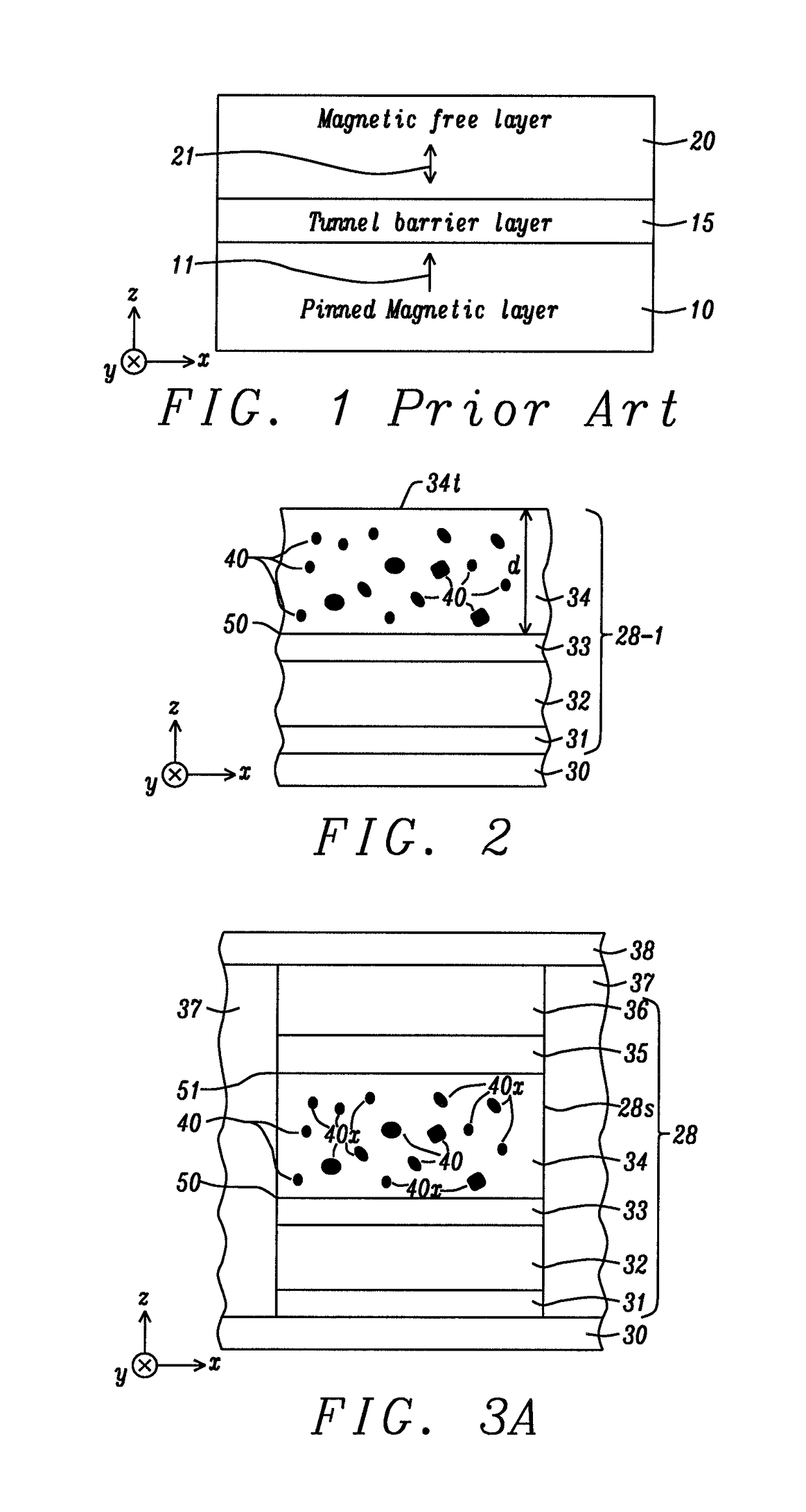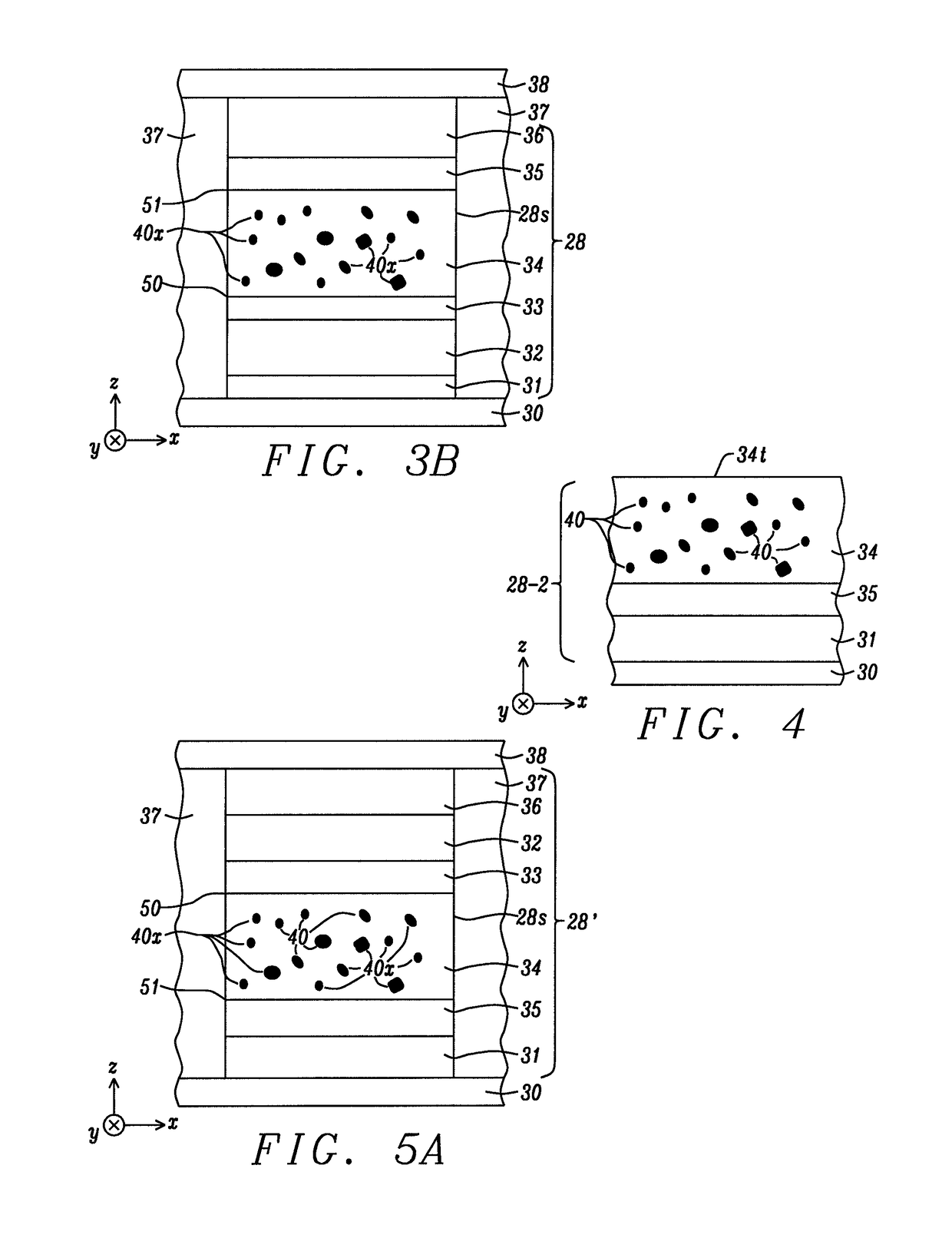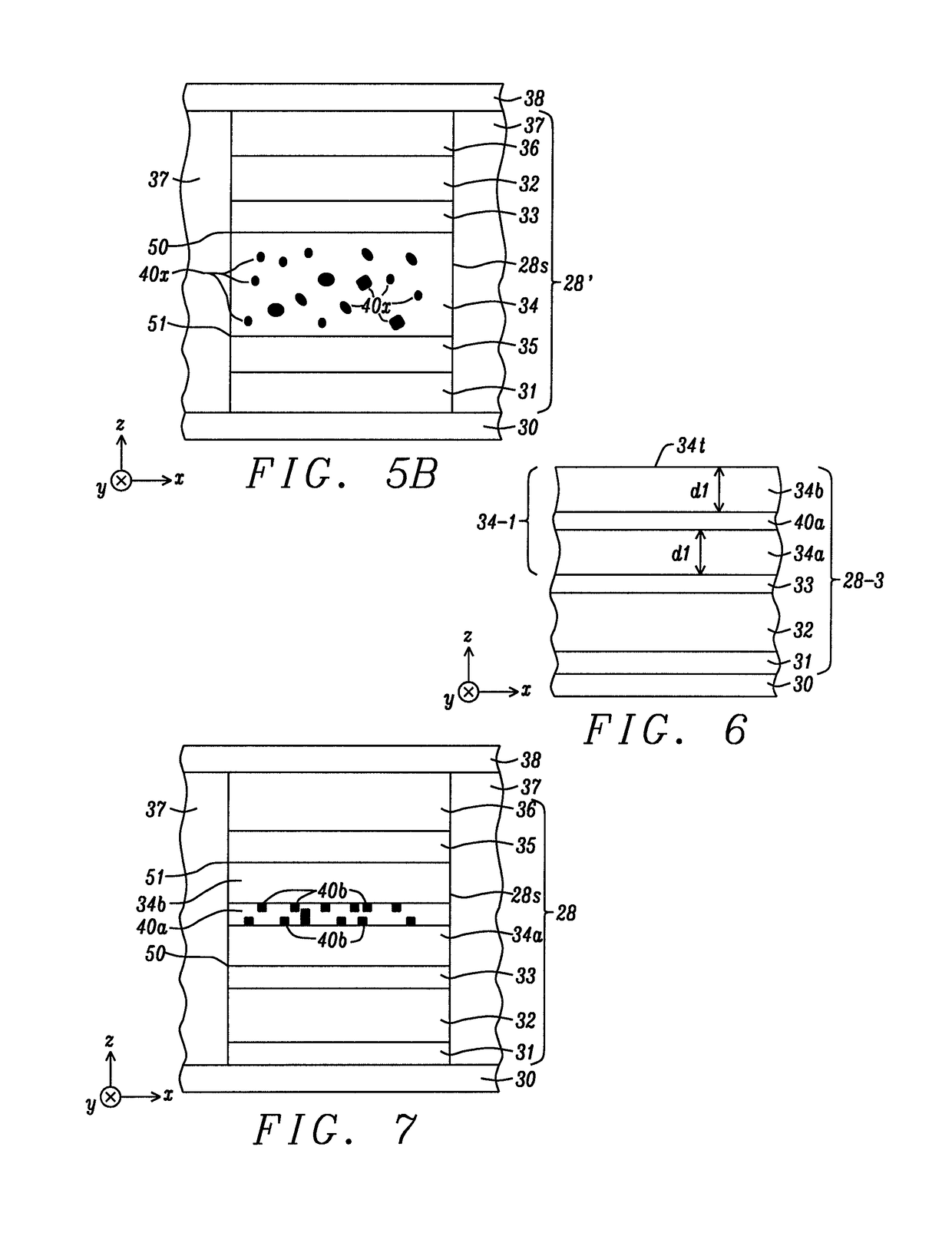MgO insertion into free layer for magnetic memory applications
- Summary
- Abstract
- Description
- Claims
- Application Information
AI Technical Summary
Benefits of technology
Problems solved by technology
Method used
Image
Examples
Embodiment Construction
[0047]The present disclosure is based on the discovery that perpendicular surface anisotropy may be enhanced in a PMA-MTJ by including metal oxide clusters, or one or a plurality of non-stoichiometric metal oxide layers within a free layer while preserving MR ratio and achieving an acceptable RA value. The free layer preferably has top and bottom surfaces that each form an interface with a metal oxide layer to lower switching current and increase thermal stability. Although the exemplary embodiments depict MTJ elements with bottom spin valve and top spin valve configurations, the present disclosure also encompasses a MTJ having a dual spin valve structure as appreciated by those skilled in the art. The PMA-MTJ may be incorporated in a MRAM, STT-MRAM or another spintronic device such as a spin torque oscillator, spin hall effect device, magnetic sensor, and a biosensor. The terms interfacial perpendicular anisotropy and perpendicular surface anisotropy may be used interchangeably.
[00...
PUM
 Login to View More
Login to View More Abstract
Description
Claims
Application Information
 Login to View More
Login to View More - R&D
- Intellectual Property
- Life Sciences
- Materials
- Tech Scout
- Unparalleled Data Quality
- Higher Quality Content
- 60% Fewer Hallucinations
Browse by: Latest US Patents, China's latest patents, Technical Efficacy Thesaurus, Application Domain, Technology Topic, Popular Technical Reports.
© 2025 PatSnap. All rights reserved.Legal|Privacy policy|Modern Slavery Act Transparency Statement|Sitemap|About US| Contact US: help@patsnap.com



